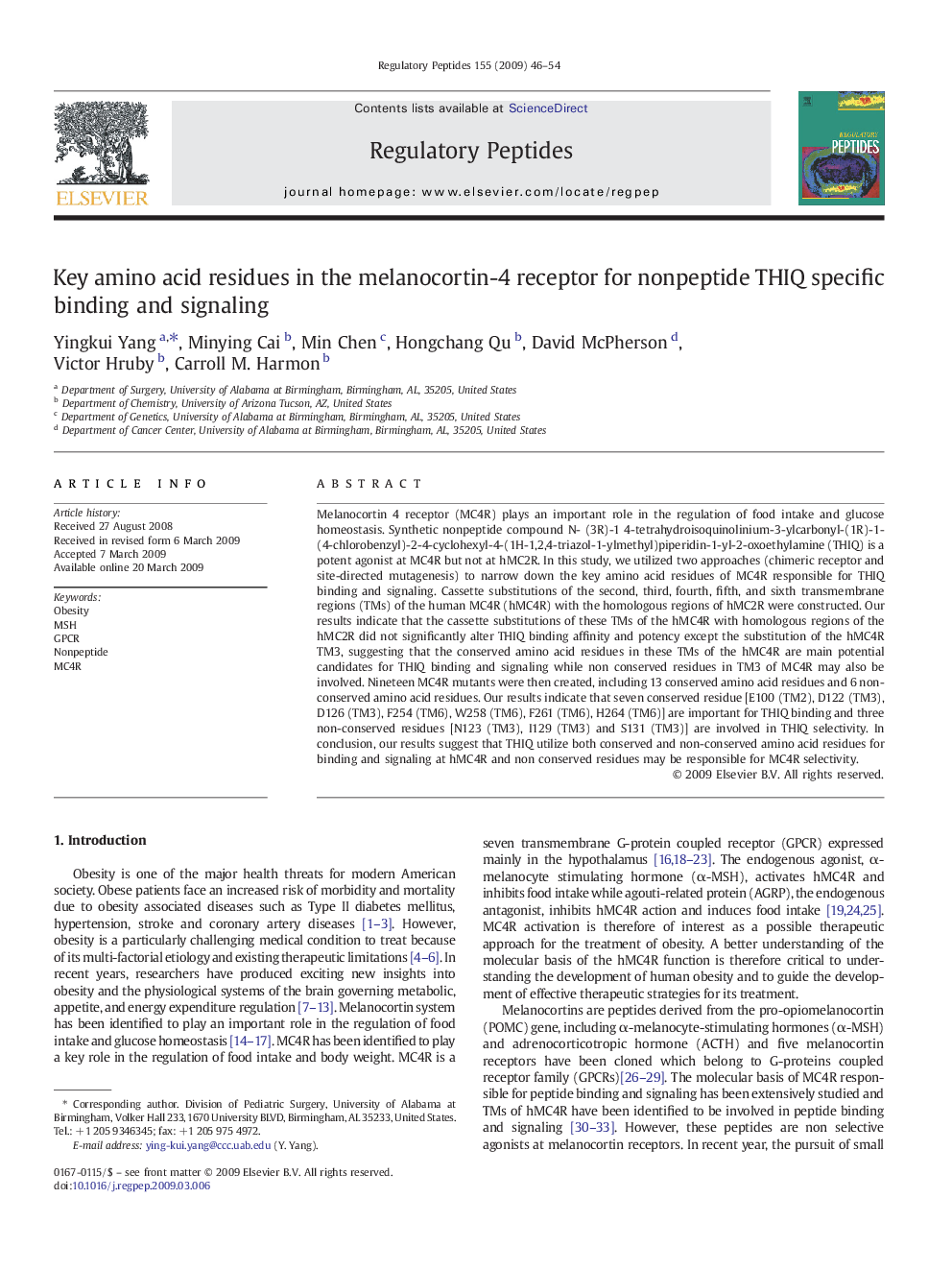| Article ID | Journal | Published Year | Pages | File Type |
|---|---|---|---|---|
| 2023089 | Regulatory Peptides | 2009 | 9 Pages |
Melanocortin 4 receptor (MC4R) plays an important role in the regulation of food intake and glucose homeostasis. Synthetic nonpeptide compound N- (3R)-1 4-tetrahydroisoquinolinium-3-ylcarbonyl-(1R)-1-(4-chlorobenzyl)-2-4-cyclohexyl-4-(1H-1,2,4-triazol-1-ylmethyl)piperidin-1-yl-2-oxoethylamine (THIQ) is a potent agonist at MC4R but not at hMC2R. In this study, we utilized two approaches (chimeric receptor and site-directed mutagenesis) to narrow down the key amino acid residues of MC4R responsible for THIQ binding and signaling. Cassette substitutions of the second, third, fourth, fifth, and sixth transmembrane regions (TMs) of the human MC4R (hMC4R) with the homologous regions of hMC2R were constructed. Our results indicate that the cassette substitutions of these TMs of the hMC4R with homologous regions of the hMC2R did not significantly alter THIQ binding affinity and potency except the substitution of the hMC4R TM3, suggesting that the conserved amino acid residues in these TMs of the hMC4R are main potential candidates for THIQ binding and signaling while non conserved residues in TM3 of MC4R may also be involved. Nineteen MC4R mutants were then created, including 13 conserved amino acid residues and 6 non-conserved amino acid residues. Our results indicate that seven conserved residue [E100 (TM2), D122 (TM3), D126 (TM3), F254 (TM6), W258 (TM6), F261 (TM6), H264 (TM6)] are important for THIQ binding and three non-conserved residues [N123 (TM3), I129 (TM3) and S131 (TM3)] are involved in THIQ selectivity. In conclusion, our results suggest that THIQ utilize both conserved and non-conserved amino acid residues for binding and signaling at hMC4R and non conserved residues may be responsible for MC4R selectivity.
